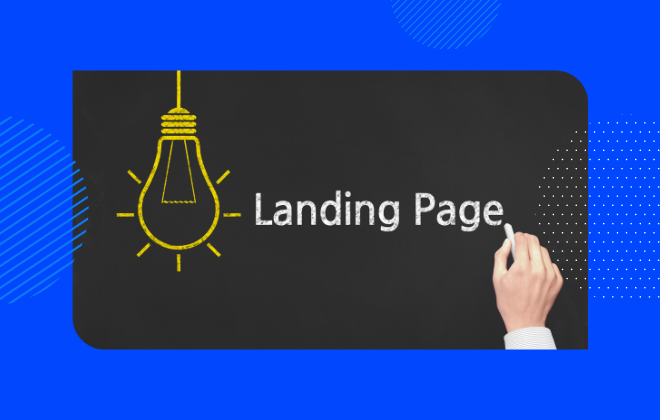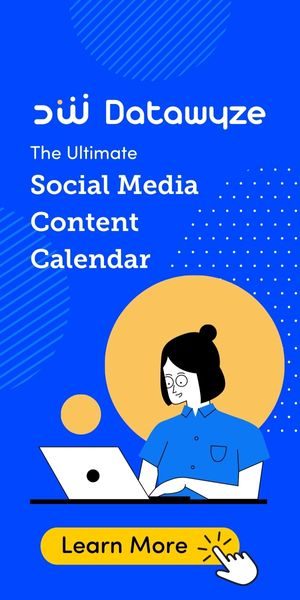Paid search optimization is a crucial aspect of search engine marketing (SEM). Paid search ads are a popular form of PPC advertising used to increase website traffic and drive revenue. However, even the best ads can fail to deliver results if they don’t have a compelling landing page to match. Landing page optimization is essential for maximizing paid search performance and improving conversion rates. In this article, we’ll discuss the importance of user experience design and website optimization in creating effective landing pages for your PPC advertising campaigns.
Why Landing Page Optimization is Essential for PPC Advertising
The primary goal of any PPC advertising campaign is to drive traffic to a website and convert that traffic into paying customers. However, many businesses make the mistake of directing PPC traffic to their homepage or a generic landing page that doesn’t match the ad’s intent. This approach can lead to a high bounce rate and poor conversion rates, ultimately wasting advertising budget.
Landing page optimization is the process of creating a custom landing page for each PPC ad that matches the ad’s intent and delivers a relevant user experience. A well-optimized landing page can significantly increase the chances of conversion and help businesses achieve a higher return on investment for their PPC advertising campaigns.
If the landing page is poorly optimized, users may quickly leave the page without taking any action, resulting in a low conversion rate and wasted ad spend. Additionally, Google Ads and other PPC advertising platforms take into account the landing page experience when determining the quality score of an ad. A higher quality score can result in a lower cost per click and a higher ad ranking, making landing page optimization critical for achieving success with PPC advertising.
Landing page optimization is essential for several reasons
Higher Conversion Rates:
Landing page optimization is a critical element in increasing the conversion rate of a website. By leveraging design, content, and other optimization techniques, a well-optimized landing page can influence visitors to take the desired action, such as making a purchase, filling out a form, or subscribing to a service. In addition, a well-optimized landing page can create a seamless user experience, guiding visitors towards the desired conversion while minimizing distractions.
Lower Bounce Rates:
Bounce rates are an essential metric for measuring the effectiveness of a landing page. A high bounce rate can indicate that the landing page is not effectively engaging visitors or meeting their needs. This can negatively impact the website’s search engine ranking, ad campaign performance, and overall user experience. By optimizing the landing page, businesses can reduce bounce rates, keeping visitors engaged and improving the likelihood of a conversion.
Improved Quality Score:
The quality score of a landing page is a critical factor in determining the ad’s cost and ad rank. A higher quality score indicates that the landing page is relevant and valuable to the user, resulting in a lower cost per click and a higher ad rank. By optimizing the landing page, businesses can improve the quality score of their ads, resulting in more effective ad campaigns and better ROI.
Overall, landing page optimization is a crucial element of a successful digital marketing strategy. By leveraging advanced optimization techniques and testing, businesses can improve the effectiveness of their landing pages, increasing conversions, reducing bounce rates, and improving the quality score of their ads.
User Experience Design for Landing Page Optimization
User experience design is a critical component of landing page optimization. The goal of user experience design is to create a website or landing page that is easy to use, visually appealing, and provides a positive user experience. A good user experience can increase the likelihood of a user converting and returning to the website in the future.
When designing a landing page for PPC advertising, it’s essential to consider the following elements of user experience design:
Visual Design
A visually appealing landing page can create a positive emotional response in the user, making them more likely to engage with the content. However, it’s important to ensure that the visual design is not only aesthetically pleasing but also aligns with the brand’s message, goals, and target audience. To achieve this, businesses should use advanced techniques such as colour psychology, visual hierarchy, and user testing to optimize the landing page’s visual design.
Navigation:
Navigation is an essential element of the landing page’s user experience. However, creating a clear and easy-to-use navigation system requires more than just adding a menu bar. Businesses should consider advanced techniques such as card sorting, user testing, and A/B testing to ensure that the navigation system aligns with the user’s mental model, is easy to use, and provides access to the most important information.
Speed:
The landing page’s load time is a crucial factor in creating a positive user experience. However, optimizing for speed requires more than just compressing images or using a content delivery network. Advanced techniques such as lazy loading, critical path optimization, and server-side rendering can significantly improve page load time, resulting in a better user experience and higher conversion rates.
Mobile Optimization:
With mobile devices accounting for more than half of all internet traffic, optimizing landing pages for mobile devices is essential. However, mobile optimization requires more than just responsive design. Businesses should consider advanced techniques such as mobile-first design, progressive web apps, and Accelerated Mobile Pages (AMP) to create a seamless mobile experience that engages users and improves conversions.
Overall, user experience design plays a critical role in landing page optimization. By leveraging advanced techniques and testing, businesses can create landing pages that not only look good but also provide a seamless user experience, resulting in higher engagement, lower bounce rates, and increased conversions.
Call-to-Action Optimization
One of the most crucial elements of a well-optimized landing page is the call-to-action (CTA). A call-to-action is a button or link that encourages the user to take a specific action, such as making a purchase or filling out a contact form. A well-designed CTA can significantly increase the conversion rate of a landing page.
When optimizing a landing page’s CTA, consider the following best practices:
Placement:
While it’s important to ensure that the CTA is prominently displayed and easy to find, advanced techniques such as eye-tracking studies and scroll maps can help businesses determine the most effective placement for the CTA. For example, businesses can use heat maps to identify the areas of the page that receive the most attention and place the CTA in those areas to maximize conversions.
Copy:
The copy on the CTA button or link should not only be clear and concise but also use persuasive language that resonates with the target audience. Businesses can use advanced copywriting techniques such as emotional triggers, social proof, and scarcity to create compelling CTAs that motivate users to take action.
Design:
The design of the CTA button or link should not only be visually appealing but also align with the brand’s message, goals, and target audience. Advanced design techniques such as colour psychology, contrast, and visual hierarchy can help businesses create CTAs that stand out from the rest of the content on the page and attract the user’s attention.
Testing:
While best practices provide a good starting point, testing is essential to optimize a landing page’s CTA. Businesses should consider advanced testing techniques such as A/B testing, multivariate testing, and user testing to identify the most effective CTA placement, copy, and design for their target audience.
By considering these advanced techniques, businesses can optimize their landing page’s CTA to maximize conversions and achieve their marketing goals.
Landing Page Testing
Landing page testing is an essential part of landing page optimization. A/B testing involves creating two versions of a landing page with slight differences in design, copy or CTA placement and directing a portion of the traffic to each version. This allows businesses to test which version of the landing page performs better and make data-driven decisions to optimize the landing page for better performance.
There are several elements of a landing page that businesses can test, including:
Headline:
While testing different headlines can help businesses determine which one is most effective, advanced techniques such as emotional targeting, headline formulas, and voice of the customer research can help businesses create headlines that resonate with their target audience and prompt them to take action. For example, businesses can use emotional targeting to identify the emotions their target audience is feeling and create headlines that address those emotions.
Visuals:
While testing different visuals can help businesses determine which ones are most effective, advanced techniques such as eye-tracking studies and heat maps can help businesses identify the areas of the page that receive the most attention and place visuals in those areas to maximize conversions. Additionally, businesses can use advanced design techniques such as contrast, colour psychology, and visual hierarchy to create visuals that stand out and prompt users to take action.
CTA:
While testing different CTA designs, copy, and placement can help businesses determine which CTA is most effective, advanced techniques such as persuasive design, microcopy, and user testing can help businesses create CTAs that resonate with their target audience and prompt them to take action. For example, businesses can use persuasive design to create CTAs that align with the user’s goals and motivations.
Form Fields:
While testing different form fields and their placement can help businesses improve the user experience, advanced techniques such as progressive profiling, smart form fields, and validation can help businesses create forms that are easy to complete and encourage users to convert. For example, businesses can use smart form fields that automatically populate based on the user’s previous responses to create a seamless user experience.
By considering these advanced techniques, businesses can test and optimize the elements of their landing page to maximize conversions and achieve their marketing goals.
Website User Experience and Landing Page Performance
A well-designed landing page is essential, but it’s also essential to consider the user experience of the entire website. A website with a poor user experience can lead to high bounce rates and low conversion rates, even if the landing page is well-optimized.
To ensure a positive user experience throughout the website, businesses should consider the following elements:
Navigation:
Clear and easy-to-use navigation is critical to a positive user experience. Consider conducting user testing to identify any pain points or areas for improvement. One approach to improving navigation is to use a hierarchical structure with a limited number of main categories and subcategories. Additionally, implementing search functionality with autocomplete and suggested results can help users find what they’re looking for quickly.
Speed:
Website speed is not only important for user experience but also affects search engine rankings. Advanced techniques to optimize website speed include compressing images and videos, using content delivery networks (CDNs), and lazy-loading techniques that only load content as it becomes necessary. Another important factor to consider is server response time, which can be improved by using a reliable web hosting provider or a content management system that utilizes caching.
Mobile Optimization:
Optimizing a website for mobile devices is not just about having a responsive design. Businesses should also consider implementing mobile-specific features such as swipeable carousels, mobile-specific CTAs, and mobile-specific content. Additionally, businesses can use progressive web apps (PWAs) to create a mobile app-like experience with offline capabilities, push notifications, and other advanced features.
Content:
High-quality content is essential to engaging users and keeping them on the website. Businesses should focus on creating content that is informative, engaging, and easy to read. One approach to improving content is to use a conversational tone and to write for the user, not the search engine. Additionally, businesses can use data analytics tools to identify which content is performing well and make data-driven decisions on what to feature more prominently.
To conclude, optimizing a website’s navigation, speed, mobile-friendliness, and content can greatly improve the user experience and lead to higher conversion rates.
Ad Campaign Optimization
Finally, businesses should consider the overall optimization of their PPC advertising campaigns. Ad campaign optimization involves analyzing data to identify areas of improvement and making adjustments to improve performance.
Some key elements to consider when optimizing an ad campaign include:
Ad Copy:
When it comes to ad copy, businesses should consider not only the language used but also the tone and messaging. Advanced techniques for ad copy optimization include testing different versions of ad copy, using emotional triggers to elicit responses from the target audience, and incorporating storytelling to make the ad more relatable and memorable.
Keyword Selection:
To select the right keywords for a PPC ad campaign, businesses should conduct in-depth keyword research, including analyzing search volume, competition, and trends. Advanced techniques for keyword selection include using negative keywords to exclude irrelevant searches, leveraging long-tail keywords for more targeted audiences, and identifying high-intent keywords that are more likely to lead to conversions.
Bid Management:
Effective bid management involves more than just setting bids for keywords. Businesses should also consider factors such as ad position, targeting options, and ad scheduling. Advanced techniques for bid management include adjusting bids based on ad performance metrics, implementing bid strategies such as automated bidding, and utilizing bid simulators to forecast potential outcomes.
Ad Placement:
Ad placement plays a significant role in ad performance, and businesses should analyze data to identify the most effective ad placements. Advanced techniques for ad placement optimization include testing different ad formats, such as video or display ads, leveraging ad extensions to provide more information to users, and using geo targeting to target specific locations or audiences. Additionally, businesses can consider retargeting campaigns, which show ads to users who have already interacted with their website or ads in the past.
To sum up, paying close attention to ad copy, keyword selection, bid management, and ad placement can help businesses achieve a higher return on investment for their campaigns.
Conclusion
Maximizing paid search performance with effective landing pages and user experience is crucial for achieving a high ROI on PPC advertising campaigns. Businesses that optimize their landing pages and website user experience can improve conversion rates, reduce bounce rates, and drive more revenue. By considering the elements of user experience design, call-to-action optimization, landing page testing, website user experience, and ad campaign optimization, businesses can create effective landing pages that convert visitors into paying customers.
If you need help with paid search optimization or landing page optimization, our agency, Datawyze, is here to help. Contact us today to learn how we can help you improve your PPC advertising campaigns and drive more revenue.
At Datawyze , we believe in using an evolution of the digital ecosystem to optimize customer experience and drive results for our clients. We recently worked with a college/university student union to optimize their online presence and increase student engagement. By implementing a comprehensive strategy that included paid search optimization, landing page optimization, user experience design, and conversion rate optimization, we were able to drive a significant increase in website traffic and conversions. The results of this campaign are detailed in our recent case study, which you can download and read to learn more about how we helped this student union achieve their goals. Contact us today to learn how we can help your business achieve similar results.





